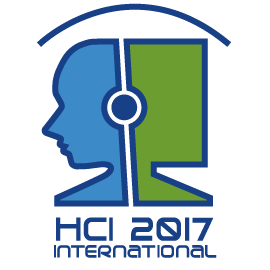Vancouver, Canada, 9 - 14 July 2017
Vancouver Convention Centre
Monday, 10 July 2017, 08:30 – 12:30
Anna Wichansky Ph.D CPE (short bio)
Oracle, United States
Objectives:
Experienced user researchers agree, the success of usability testing is only as good as the plan to conduct it. Lack of user requirements and adequate planning result in poorly conducted tests, which may contribute to poor product design decisions. The objective of this tutorial is to teach you basic methods to specify user requirements, create a thorough test plan, and conduct usability testing of software. The methods reflect real-world field, laboratory, and remote testing processes used in industry today, and are grounded in current ISO standards pertinent to usability. A consumer-level website will be used in the exercise scenarios. It is recommended that this course be taken before the related workshop, Hands-On Software Usability Testing Lab and Advanced Methods, which is offered at HCI International 2017.
Content & Benefits:
- Introduction: objectives, key takeaways, instructor’s bio, agenda
- What is usability testing:
- ISO definition
- key elements
- benefits
- formative vs. summative testing and reasons for each type
- other methods that are not usability testing
- special domains: mobile apps, medical products, collaboration tools
- examples of common product scenarios and appropriate test methods
- Specifying user requirements:
- context of use
- test methods
- test metrics
- common forms of user requirements
- Group Exercise. Specifying user requirements for a novel product scenario
- Identifying users:
- target groups
- stakeholders
- selection criteria
- Specifying tasks:
- task validity
- task goals
- click paths
- Core performance metrics:
- efficiency
- effectiveness
- satisfaction
- Group Exercise: Creating a preliminary test plan
- Importance of controls:
- Definition
- Statistical reliability
- Moderator script
- Participant guide
- Data types & collection:
- Audio/video recording
- Automatic data collection
- Data analysis plan
- Participant Recruitment
- sourcing users
- incentives
- sample sizes
- screening questionnaires
- Group Exercise. Review of a sample screening questionnaire
- Scheduling users:
- Session times
- Maps & directions
- Contact information
- Reminders
- Group exercise: Review a formal test plan
Benefits: This course provides effective strategies and standards for planning and scheduling usability tests, including incorporation of user requirements, behavioral objectives, choice of test methods, and standard elements of usability such as context of use, experimental controls, and behavioral metrics. The hands-on exercises give a “feel” for what it is like to get ready for a real test.
A test planning template is provided. The instructor brings a wealth of industrial research experience to coach you through the process and answer your questions about specific challenges of real-world usability testing.
Target Audience:
Novice UX research professionals, and any level software designers, product managers, marketing managers, and consultants new to usability testing will benefit most. This course assumes students are familiar with software product development cycles, and are ready to learn applicable usability assessment methodologies. Students should bring an Internet-ready laptop to the class.
Relevant links:
Bio Sketch of Presenter:

Anna Wichansky Ph.D CPE is an applied experimental psychologist who specializes in the study of how users interact with new technology. She has an M.S. and Ph.D in human factors from Tufts University, Medford, Massachusetts, USA and A.B. from Harvard University, Cambridge, Massachusetts, USA in psychology. She has researched, developed, and tested user interfaces for transportation, telecommunications, space exploration, electronic instrumentation, computer hardware, software, graphics, and media products. She has a patent for a remote control for interactive television. She worked at the U.S. Department of Transportation Research and Special Programs Administration, Bell Laboratories, Hewlett-Packard, and Silicon Graphics, where she founded the Customer Research and Usability group. At Oracle, she founded and directed the Corporate Usability Labs and the Advanced User Interface Research group. She is currently Senior Director of Applications User Experience. Anna is a Fellow of the Human Factors and Ergonomics Society and director emerita of the Board of Certification of Professional Ergonomists. She is on the editorial board of the international scientific journal Ergonomics. She is a frequent presenter at HCII, ACM SIGCHI, and HFES annual meetings.


